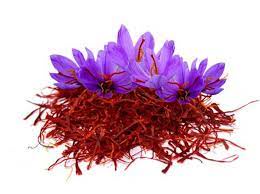Introduction
Kashmiri saffron, often referred to as the "red gold," is a precious spice known for its unique flavor, vibrant color, and numerous health benefits. This exquisite spice is cultivated in the picturesque valleys of the Kashmir region, nestled between the Himalayas. The history of Kashmiri saffron is a fascinating blend of innovation, tradition, and the remarkable efforts of generations of farmers. Its journey from ancient times to its current prominence as one of the world's finest saffron varieties is a testament to human ingenuity and dedication.
Ancient Origins and Introduction to Kashmir
Saffron, botanically known as Crocus sativus, has been revered for centuries as a symbol of luxury, fragrance, and culinary excellence. The exact origin of saffron is shrouded in mystery, with historical accounts placing its earliest cultivation in regions spanning from ancient Mesopotamia to Greece and Asia. However, it was the Persians who are believed to have introduced saffron to the Indian subcontinent around 500 BC. Over time, saffron cultivation spread to various parts of India, eventually finding its way to the breathtaking landscapes of Kashmir.
The Saffron Renaissance in Kashmir
Kashmir, renowned for its natural beauty, fertile soil, and temperate climate, provided an ideal environment for saffron cultivation. Historical records suggest that saffron cultivation began in the Kashmir Valley during the 9th century, under the rule of King Yusuf Shah Chak. The king is said to have imported saffron corms from Persia, marking the beginning of a new era for Kashmiri agriculture.
Innovation in Cultivation Techniques
The success of saffron cultivation in Kashmir can be attributed to the innovative techniques adopted by the local farmers. Saffron requires specific conditions to thrive, including well-drained soil, abundant sunlight, and a specific temperature range. The traditional method of cultivation involves planting corms (underground bulb-like stems) in well-prepared beds.
One unique technique developed in Kashmir is the construction of saffron fields known as "karewas." These are terraced fields carved into the slopes of the mountains. Karewas not only prevent soil erosion but also create optimal conditions for saffron cultivation by maximizing sunlight exposure. The saffron crocus flowers, with their vibrant purple petals and delicate stigma, are handpicked during the early morning hours to ensure the highest quality of saffron.
Preservation of Tradition
Kashmiri saffron cultivation is deeply intertwined with local culture and traditions. The entire process, from planting the corms to harvesting the delicate stigmas, is carried out by hand, often involving multiple generations of a family. The traditional methods have been passed down through generations, preserving the authenticity and uniqueness of Kashmiri saffron.
Challenges and Sustainability
While the legacy of Kashmiri saffron is undeniably captivating, its journey has not been without challenges. Political conflicts, changing weather patterns, and increased competition from other saffron-producing regions have posed threats to the sustainability of saffron cultivation in Kashmir. The delicate saffron crocus is highly susceptible to diseases, pests, and climatic fluctuations, making its cultivation a labor-intensive and unpredictable endeavor.
Efforts for Revival and Recognition
To address these challenges and protect the heritage of Kashmiri saffron, various initiatives have been undertaken. Government agencies and non-profit organizations have collaborated with local farmers to introduce modern agricultural practices, improve irrigation systems, and offer training in pest management. Additionally, there have been efforts to obtain Geographical Indication (GI) status for Kashmiri saffron, recognizing its unique origin and characteristics.
Conclusion
The journey of Kashmiri saffron from its ancient roots to its present-day significance is a captivating tale of innovation, tradition, and perseverance. The picturesque landscapes of Kashmir have provided the canvas upon which this "red gold" flourishes, thanks to the creative techniques developed by generations of local farmers. As the challenges to saffron cultivation persist, it is essential to recognize and support the efforts aimed at preserving this cultural and agricultural treasure. The legacy of Kashmiri saffron serves as a reminder of the profound connection between humans and the land, and the remarkable results that can emerge from harmonizing tradition with innovation.


No comments yet